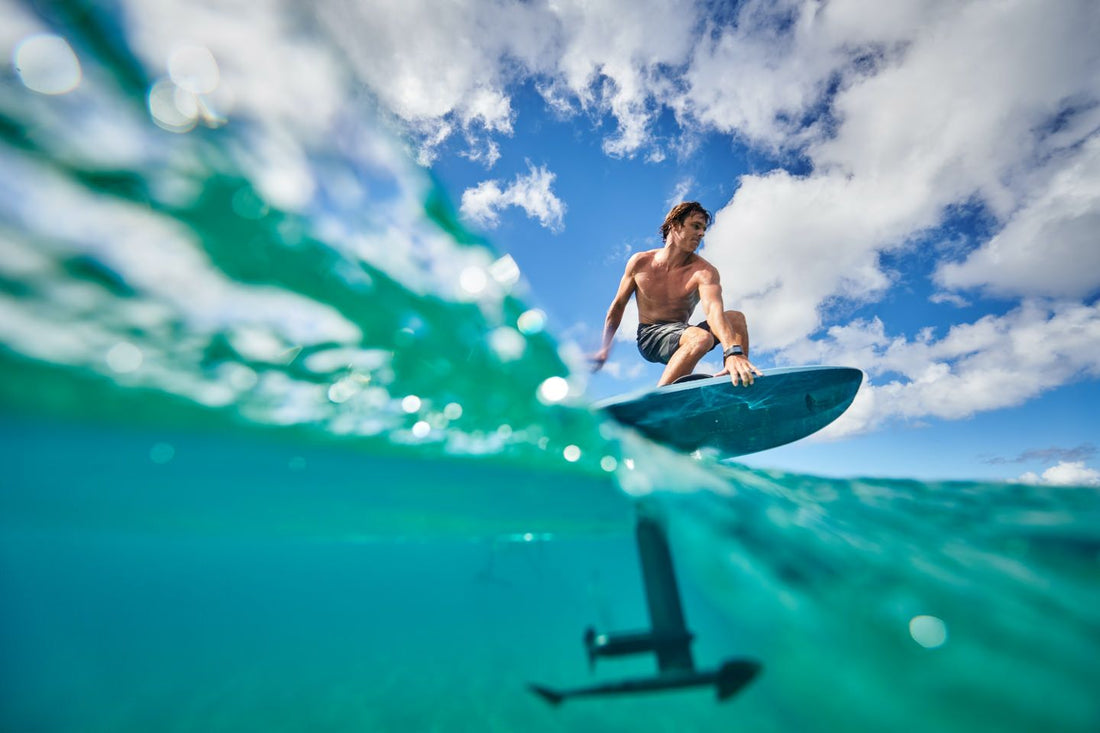In an ideal world, wind and waves would be available for us when we needed them so we could get our surf fix whenever we could squeeze it in. Unfortunately, that’s not the way it works, so us water-addicts had to come up with something to tie us over when the weather’s not cooperating.
Motorized surfing – jet propelled surfboards and in more recent years the more agile and seamless eFoil – first came as a way to be able to surf in places and in conditions where it was previously impossible to do so. By now, though, it’s taken on a life of its own and become a sport in its own right, with many of the world’s top water athletes spending hours perfecting the craft.
If you’re thinking of trying it out, the first thing to do is figure out which type of motorized surfing is right for you. Gas-powered surfboards are made out of carbon fiber and kevlar and weigh between thirty and sixty pounds.
They are propelled by a gas engine which sends water through a nozzle at the stern of the board. This provides the thrust and allows the board to reach speeds of up to thirty-five miles per hour. Movement and velocity are managed by a control handle that is attached to the board.
Prices range between $3,390 for recreational models and $19,000 for competitive models. Electric surfboards are pretty similar but they use an electric engine powered by a battery-pack instead of fuel. Like their gas-powered predecessors, they are also made of carbon and other composites.
They weigh between sixty and ninety pounds, are controlled by either a control handle or a wireless throttle, and also reach speeds of up to thirty-five miles per hour. Most start at about $10,000, but some models go up to $25,000.

The newest toy on the market is the eFoil which is a hydrofoil that uses an advanced lithium-ion battery that powers a silent electric motor that’s mounted on an all-carbon hydrofoil. Electric and gas-powered boards float over the water, just like traditional surfboards, but eFoils turn the experience up a notch by allowing you to surf above the water when it propels you onto a foil. They weigh between thirty-five and sixty-five pounds, and are controlled by a wireless bluetooth remote. Prices start at $5,900 and go up to around $13,900. Most of the key players, however, are between the $10,000 and $12,000 dollars.
Although all three of these motorized surfing options have their fan base, the eFoil is by far the most accessible and versatile one if you’re interested in taking full advantage of the benefits of the sport. Not only is it much lighter, smaller, and easier to transport and store, it also allows you to glide and fly over the water, giving a whole new meaning to the concept of exploring new frontiers.
Motorized surfing is cool, but motorized flying? There’s really just nothing like it. Aside from the comfort afforded by the design and the thrill of the feeling of flying, it’s also super quiet and eco-friendly. You can make the experience as adrenaline-fueled or as zen as you want it.
In short, we always say this, but the best way to choose your own adventure is by trying it out. At Lift, we have a global network of demo locations where you can go fly before you buy. Also, if you have any questions, get in touch! We’re always stoked to hear from you and happy to help you clear up any doubts.

